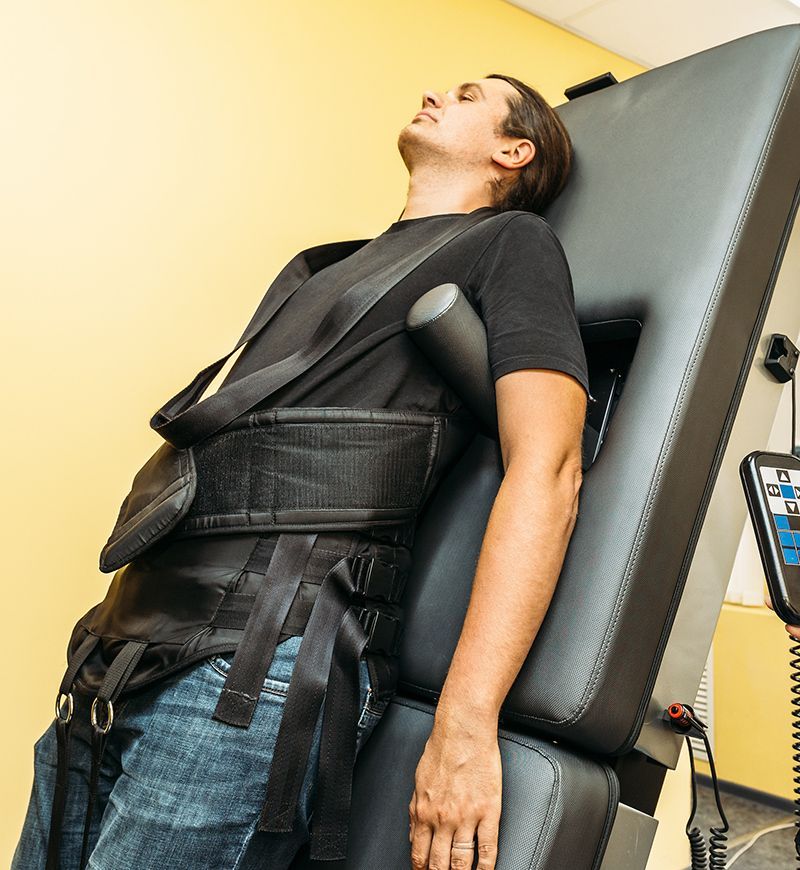Nonsurgical Spinal Decompression
Relieve Back Pain Without Surgery
Come To Our Chiropractors For Spinal Decompression Therapy In Dillon, SC
Spinal surgery is nothing to take lightly. That's why Pee Dee Health Solutions in Dillon, SC offers a nonsurgical alternative: spinal decompression therapy. Our treatments last anywhere from 30-45 minutes and involve fitting you into a harness to provide customized treatments based on your needs. This is done by gently stretching the spine to take pressure off discs and spinal joints to promote natural healing. Nonsurgical spinal decompression generally requires up to 28 treatments and has a 75% success rate.
For more information, call (843) 627-3222 to see if this nonsurgical therapy is a good fit for you.
 Button
Button
 Button
Button
Learn About The Advantages Of Spinal Decompression
Nonsurgical spinal decompression is a non-invasive alternative to spinal surgery. Patients don't have to worry about long recovery times or becoming addicted to painkillers. Other benefits include:
- Reducing compression of pinched nerves
- Improving joint flexibility
- Boosting the immune system
- Lowering stress levels
- Increasing blood flow
Make surgery a last resort. Call today to book spinal decompression therapy at our Dillon, SC clinic.
Spinal decompression is a non-surgical treatment approach that aims to relieve back and neck pain caused by conditions such as herniated discs, degenerative disc disease, spinal stenosis, and other spinal disorders. It involves gently stretching the spine to relieve pressure on the spinal discs and nerves.
There are two main methods of spinal decompression:
- Non-surgical spinal decompression: This treatment is typically performed using a specialized table or device that applies traction or stretching forces to the spine. The patient lies on the table while the device gently pulls and releases, creating a negative pressure within the spinal discs. This negative pressure can help retract herniated or bulging discs, reduce pressure on nerves, and promote the movement of oxygen, water, and nutrients into the affected area.
- Surgical spinal decompression: In some cases, when non-surgical methods are not effective or the condition is severe, surgical intervention may be necessary. Surgical spinal decompression involves removing a portion of the bone or tissue that is compressing the spinal cord or nerves. Common surgical procedures include laminectomy, discectomy, foraminotomy, or spinal fusion.
It's important to note that spinal decompression therapy may not be suitable for everyone, and the appropriateness of the treatment depends on the underlying condition and individual circumstances. It's crucial to consult with a qualified healthcare professional, such as a spine specialist or chiropractor, to determine if spinal decompression is a suitable option for your specific situation.
Additionally, spinal decompression is often used as part of a comprehensive treatment plan that may include other interventions such as physical therapy, pain medication, exercises, and lifestyle modifications to address the underlying causes of back or neck pain. The goal is to alleviate symptoms, improve mobility, and enhance overall spinal health.
Browse Our Website
Contact Information
Formally Roff And Schilsky
Address: 200 E Roosevelt St Dillon, SC 29536
Phone: (843) 627-3222
All Rights Reserved | Pee Dee Health Solutions
